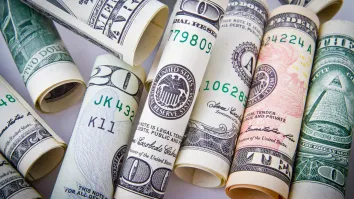Hong Kong Economics
Downgrading 2009 real GDP forecast to -3.8%:
Amidst severe headwinds from the rest of the world, we now see a deeper recession for the Hong Kong economy this year, with real GDP contracting by 3.8 percent (revised down from -1.2 percent), with negative growth sustaining for five quarters in both YoY and QoQ terms, in line with our latest downgrade on China. The latest cuts are driven primarily by further weakening in external demand, which is expected to slash merchandise trade flows by more than 10 percent and take Hong Kong’s service exports, a key growth pillar, into negative growth for the first time since 1998. The recovery in 2010 is expected to be tepid at best; we forecast 2.5-percent growth.
A deep cyclical adjustment, but less structural pain than 1998-2003:
Although the current recession is approaching the severity of that in 1998 (real GDP -6 percent) statistically, we characterize the current recession as a deep cyclical adjustment, which contrasts strikingly to the multi-year structural adjustment over 1998-2003. Having gone through six years of deflation, resolved a host of structural issues, and reformed itself into a service hub for the Mainland economy, we believe that Hong Kong is now firm-footed on a much more sustainable growth model and stronger economic fundamentals to weather the recession this time around.
Reassessing Hong Kong’s Macro Outlook Amidst Sharp Deterioration in Global Economic Conditions
Global economic conditions have turned decisively more negative since our last forecasts for the Hong Kong economy and our call for negative growth and the return of deflation in 2009. As a result, we are reassessing the economic outlook and downgrading our projections again. Global financial markets have witnessed an unprecedented plunge in sentiment as economies grapple with the ramifications of the financial tsunami that originated from the US subprime crisis. What keeps surprising (and disappointing) investors is the extent of the contagion effects from the financial industry to almost all economic sectors. As more decades- and even centuries-old corporates and multinationals run into financial difficulties or even file for bankruptcy, our global economics team has unveiled hefty cuts to growth outlooks for the industrial world. The US economy is now forecast to contract by 2.4 percent in real terms this year, Euroland by 1.6 percent, and Japan by 2 percent. Such a synchronized global recession is undoubtedly unseen since World War II. While Hong Kong (and indeed the rest of the world) has been looking to the Mainland as a source of growth resilience, it appears that China, while continuing to outperform and gain share in the global economy and global trade, is also facing immense economic difficulties ahead. Negative export (and overall trade) growth unseen since 1976 is expected to slash China’s real GDP growth to just 5.5 percent in our newly revised forecasts, the weakest since the Cultural Revolution (1967-68).
Harsh Blow to Hong Kong’s External-Oriented Sectors
The key driver of our latest revisions to Hong Kong’s macro outlook is the cuts to forecasts for both merchandise and invisible trade. Sharp drops in trade flows have already been observed in the region in recent months. Extreme weakness in developed markets demand is expected to slash shipments through Hong Kong (as entrepôt between China and the rest of the world), for which we now expect contraction in excess of 10 percent YoY, more severe than that experienced in 1998 (Asian Financial Crisis) and 2001 (collapse of the tech hype). Exports of services, which make up more than 40 percent of Hong Kong’s GDP and which has been a key growth driver for the economy, is expected to contract for the first time since 1998, by 8 percent. Trade-related services (half of the total) will likely see a contraction in line with merchandise trade, while non-trade related services will also likely see a lull as inbound tourism slumps, multinationals cut down on consulting and marketing expenses, and financial market conditions remain unfavorable for fundraising activities by mainland enterprises.
Given the external-oriented nature of the Hong Kong economy, the more negative outlook on trade certainly puts further pressure on domestic demand, in addition to the pain from the negative wealth effect from asset depreciation. Although aggressive financial relief measures have brought about much lower interest rates of late, the availability of credit to the non-financial sectors has yet to normalise and become supportive of real economic activity. It remains a distinct risk that many small to medium-sized enterprises, customarily dependent on bank credit for working capital, will face cash flow difficulties in the coming months. A wave of company closures could be expected in the next few months, as consumer and business spending cools further after the Lunar New Year season, with layoffs adding to the jobless count. Even for the majority of the businesses that will manage to weather the downcycle, reduced profits or losses are set to hurt consumption and investment sentiment on the part of entrepreneurs.
Cutting Growth Projections
Steeper declines in trade flows (merchandise exports -9.9 percent, imports -11.5 percent, service exports -8 percent) are expected to bring about weaker consumption and investment than we had previously forecast. Beyond the negative wealth effect, private consumption is seeing another leg down from worsening labor market conditions (job losses and salary/bonus cuts). We now see private consumption shrinking 2.5 percent in real terms this year versus 0.5-percent growth previously. Investment is not only being hampered by the reduced availability of credit, but also by the glum outlook for global demand. Private sector capex is expected to fall 5 percent (versus -4 percent previously). Inventory/stock rundown typically exacerbates economic downturns and is forecast to contribute negatively to overall GDP growth, by 1.4ppt (versus -0.9ppt previously). Putting the components together results in 3.8-percent contraction in real GDP for the year, down from our earlier forecast of -1.2 percent.
We continue to model five quarters of sequential contraction (QoQ), lasting from 2Q08 to 2Q09, although the plunge is now seen to be more severe in 1H09 than we previously anticipated. Such contractions take the economy to a lower level before rebounding, therefore keeping YoY growth in negative territory for longer. We now expect negative YoY real GDP growth throughout 2009, with contraction in excess of 5 percent in 1H09. Meanwhile, we continue to expect a tepid recovery in 2010 (2.5-percent real GDP growth versus 2.7 percent previously), in line with the view of our colleagues in the global team, led by the rebound in trade growth to the low- to mid-single-digit range.
With respect to the labour market, more upcoming company closures and layoffs will likely accelerate the ascent of the jobless rate in the coming months. We originally expected the unemployment rate to reach 6 percent by end-2009, from 4.1 percent at the end of 2008, but now think that it could surpass that level even earlier. While the financial sector appeared to be the worst hit by the credit crisis so far, the pain is already extending to the real estate, construction, trade, retail, and hospitality sectors.
















